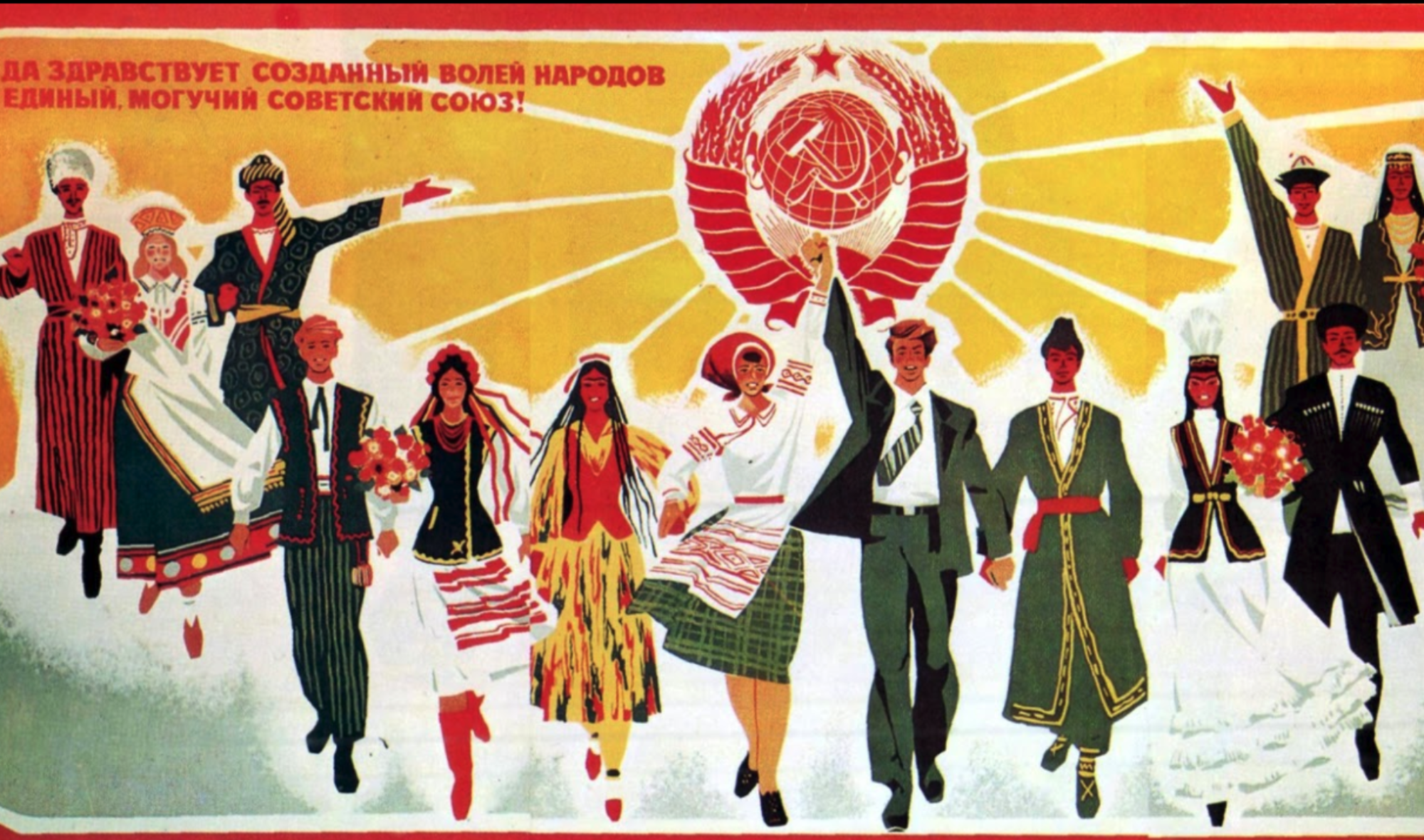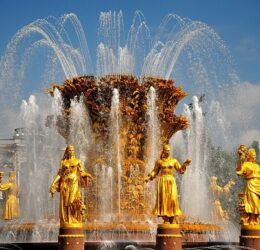The development of Tashkent was the greatest urbanization effort undertaken by Soviet leadership. This development was manifested in civil programs to increase the basic living standards of living in the city. This was done through strenuous actions of moving industry to Tashkent to protect Soviet manufacturing. The result of these actions turned Tashkent from an old city to maxing its industrial potential. Something interesting to evaluate is the Soviet interests of urbanizing Tashkent. Party officials often blamed Uzbeks for missing development quotas set by Soviet authority. “Uzbek people were identified as promoting ethnic animosities throughout Central Asia and fostering rapidly declining standards of living and food shortages.” (Stronski 52) This statement contests the concept that the Soviets wished to ‘modernize’ Central Asians. So what were the party’s interests in developing Tashkent? Were Soviet intentions purely strategic and Tashkent represented the best location for industrial relocation? Or did officials believe in establishing a forepost of Soviet intentions and creating a model communist city?
To be or not to be? Not to be
As we have progressed chronologically in Soviet history we have been encountering more direct examples of communist repression and persecution. Encountering things identifying as ‘great’ but were far from it such as the Great Famine, Purge, and Terror. Apart of the odious apparatus of Soviet persecution was the collectivization campaign of course, and in the reading we discern that this had a cultural aspect of it with the suppression of the avant garde Ukrainian art movement. In these chapters we are described the formation of a distinct cultural epicenter in Soviet Ukraine. This was due to the unique cultural landscape of the region, being made up of Jews, Poles, Russians, and Ukrainians. Investments in the imperial Southwest by Catherine the Great into the humanities of Odessa created a burgeoning artistic center. “But Odesa, in fact, belongs to a greater cultural phenomenon of the entire region. Multi-ethnic interactions in the small towns and cities throughout the southwestern provinces inspired and shaped the many artists featured in this book” (Fowler 29) This hub of cultural in Soviet periphery provided a different type of artistry than that offered in Moscow due to cultural differences in the region. As with most other situations that we have evaluated in the Soviet Union this group will suppressed in the name of party and state interests so it leads me to the questions of,
How was Ukraine’s diversity a blessing and a curse? How does multilinguality of the art from the region affect how Soviets should perceive it?Do ethnically diverse metropolitan regions intrinsically pose a threat to authoritarian rule?Do these artists by the nature of them not being outlets of the state therefore present a threat to Soviet national security? Or is state funded and controlled propaganda the only art that can coalesce to party interests? Specifically in relation to the Stalinist Soviet state.
Starvation, a new government program
The Soviet Union under Joseph Stalin was an oppressive and totalitarian regime whose callousness and ineptitude led to innumerable atrocities. These atrocities are crystalized by the accounts of Mukhamet Shaiakhmetov in 1930s central asia. Farm collectivization forcibly removed food from the hands of farmers and then Soviet mismanagement of that food led to a national famine in the USSR. Mukhamet witnessed these policies in effect as his father was labeled a kulak and dispossessed and sent to work coal, not to mention the other atrocities that his family was forced to endure. We see first hand the Soviet dekulakization policy at play when the author recounts the confiscation “You still have some livestock, expensive things even gold hidden from authorities, hand them over!”(56) These actions were taken against more productive farmers as they were framed as enemies of state for being obstacles in the farming collectivization effort. Mukhamet details his and others confusion at the government’s persecution against people who were simple workers. In this class we have discussed Soviet policies at both a micro and macro scale, discussing both policy and how it affected individuals. However the scale of the atrocities committed in the name of collectivization are hard to fathom so does this memoir illicit a more comprehensive grasp on how these actions affected the lives of people confused about their designation as an enemy of the state? Also is there at least an element of immorality that is at play when discussing how the Soviets applied these policies or is it simple ineptitude?
Hujum promises and Communist realities
The necessity of cultural reform in Central Asia by Soviet policy was apparent to administrators was obvious even as the first entered the region. The key point of the cultural conflict between the indigenous groups and Soviet officials was in the policy of Hujum. Hujum much like other policies was ripe with Soviet bureaucratic failures and ineffective failures which came to a head in the Chust affair. The affair demonstrated that the lack of Soviet executive control and meant that officials could not apply policy effectively enough for the policy to succeed. This lead to a failure of the policy overall despite official reports speaking of the absolute success of the program. For Jahon Obidova however Hujum worked to produce the exact the result Soviets hoped for. An ardent Communist that held party ideas above those that her culture gave her. “You said according to sharia exploitation was forbidden, and all Muslims should live in conditions of equality. So then why do you yourself own about 70 percent of the land?” pg 312. She used the communist infrastructure to advance far beyond the situation she found herself in. She then used her platform to promote women’s rights in the region.
While Soviet application of the Hujum was inadequate and ended with many woman who deveiled, reveiling. There is still the more important question of if this program was properly reported on and administered effectively, whether this policy would have been to the legitimate benefit of the majority of women in the region? The question of forced unveiling is a part of the policy, there is also equality under law which was a part of the program. Is forced legal reform as much a violation of Islamic culture as forced unveiling? Is forced unveiling a legitimate way to promote women’s rights? Does Jahon stand as an example of what a woman should do to advance herself and other women or did she betray her people to get ahead? Can her situation be attributed to other woman at that time?
Agriculture, Collectivization, and the Great Leap
The Soviet administration inherited one of the most defunct political systems in Europe. Historically the areas that constituted the USSR were mostly poor and unindustrialized except some metropolitan areas and just emerged from war and pestilence while still suffering widespread famine. The public administration overhaul required was obnoxiously large and the Soviets leadership made substantial adjustment but the implementation of these policies was barbaric and coercive. The necessity of vast agricultural reform was apparent to Soviet leadership, the proletariat was starving and the infrastructure required to feed them did not exist, not to mention the rampant poverty in the border lands
“No matter how hard I work, I can’t better myself”
. The odious apparatus the Union used to fix this was collectivized farming which created more problems than it solved. The absolute brutality the Soviets inflicted on Kulaks in the name of efficiency highlighted the key problem about conceptualization to actually enacting policy that the Soviets struggled with.

